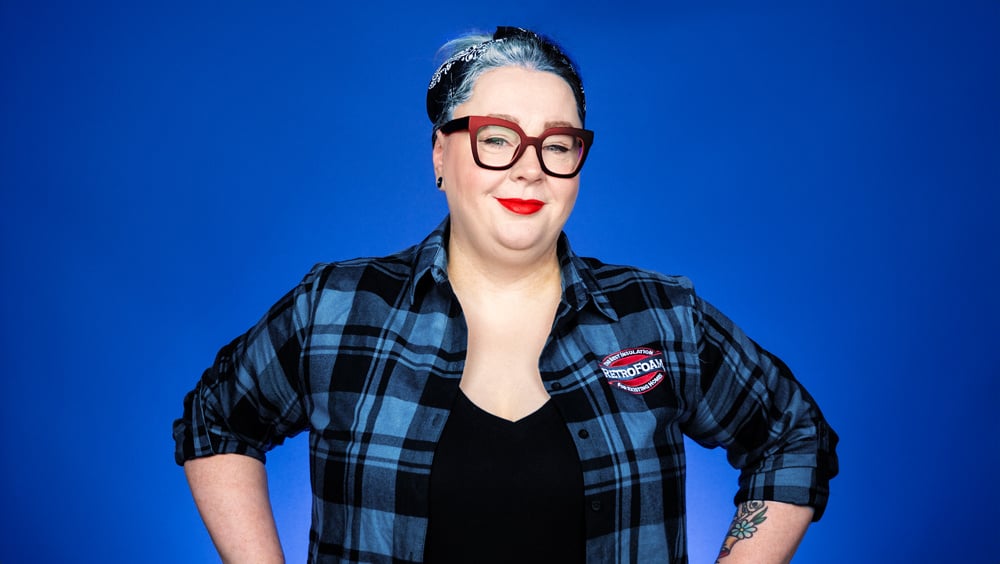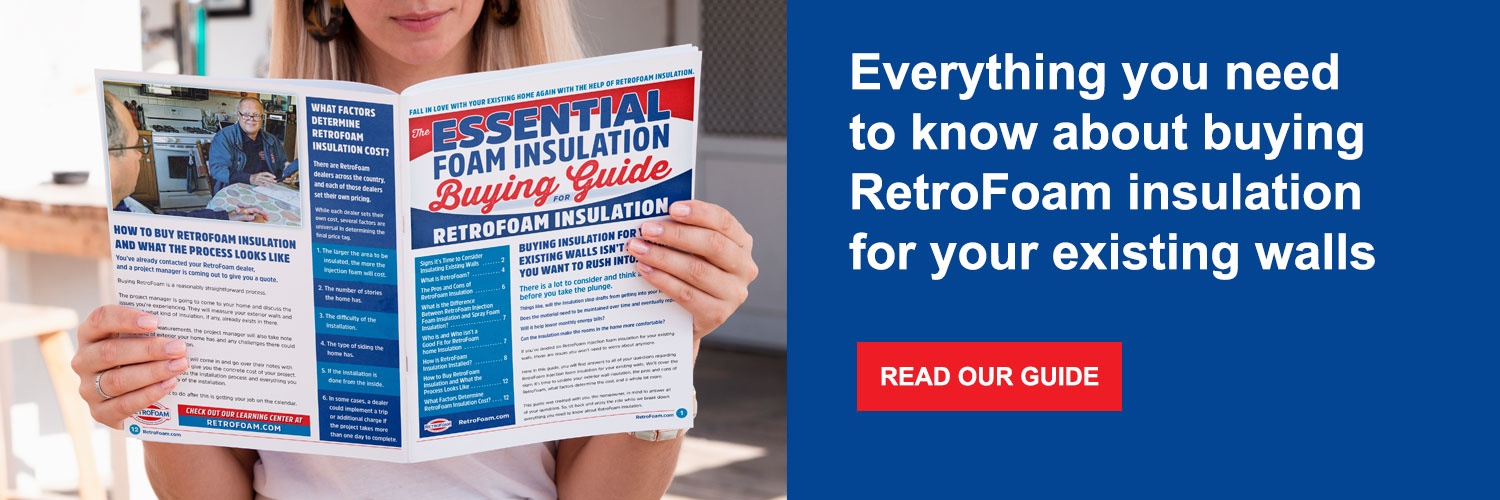Does RetroFoam Insulation Work for Sound Dampening?
injection foam insulation | RetroFoam insulation | sound dampening | sound deadening | FAQs


Does RetroFoam Insulation Reduce Noise Transmission? (Quick Answer)
RetroFoam insulation does have the added benefit of reducing noise in the home.
While injection foam insulation won’t completely soundproof your home, it does have sound deadening qualities to make it quieter.
Let’s talk about how RetroFoam home insulation reduces noise.
Road noise, loud neighbors, dogs barking, and roosters crowing are all sounds you don’t want to deal with inside your home.
You’re looking for a bit of peace and quiet, and you’ve heard that RetroFoam insulation is a sound-dampening material. RetroFoam can definitely help make your home quieter, but there are a few things you should consider as far as how your home is laid out and your expectations.
Homeowners who have had RetroFoam insulation installed in their existing walls have told their contractors that they have noticed a reduction in noise inside their home. This sound reduction is an awesome benefit of RetroFoam, but every case is going to be different.
We love educating everyone who wants to learn more about RetroFoam home insulation and all of the benefits it has to offer. With that being said, let’s talk about what causes sound transmission, the difference between sound deadening and soundproofing, and whether sound dampening foam, like RetroFoam, works.
What Causes Sound Transmission into the Home?
You need to understand precisely what causes the sound to transfer into your home from the outside and even room to room.
The building material in your home is a big factor. The drywall and studs can transfer sound through them. Really, any place where there is a solid connection, like in the drywall and studs, sound can move through it.
The ductwork and plumbing inside your walls are another culprit of a noisy home. Those heat registers going from the bedroom to the furnace and other rooms create a direct connection for sound to travel through.
Plumbing is another noisy thing in your home. Some homeowners complain that they hear the pipes flex, move, and creak when they turn on a faucet. Those weird noises transmit through the walls wherever the pipe runs throughout the home.
Little to no insulation in your existing walls also contribute to noise levels because there’s nothing in there buffering the sound from outside or room to room. Since there is nothing in the wall to physically stop the sound, the home will be noisier than you want.
Sound Deadening vs Soundproofing
Some people interchange soundproofing and sound deadening pretty frequently, and this causes some confusion.
RetroFoam is a noise-dampening material, but it’s not going to soundproof your home completely.
Sound dampening doesn’t have the capabilities to make your home impervious to sound. For example, if you insulate your walls with RetroFoam insulation, it can help reduce sound transmission up to 80 percent in some cases. Again, it won’t work wholly to soundproof the home, but it can make it quieter.
Sound deadening spray foam is another thing to consider in open cavities like the attic, crawl space, exposed wall cavities, and rim joist.
If you want to soundproof your home or even just a room completely, you’ll need sound panels, noise and isolation foams, sound barrier materials, and noise absorbers to get you started.
Does Sound Deadening Foam Work?
When it comes to RetroFoam insulation, yes, it can help with sound deadening in the home.
The thing about sound dampening foam insulation, in this case, is that it’s not designed for that – it’s just an added bonus. The sound dampening quality of RetroFoam can reduce noise up to 80 percent, but that amount isn’t guaranteed as it’s a secondary benefit.
The air seal created by RetroFoam will reduce the noise transfer, but not stop it completely. If you yell into a pillow, the sound is muffled, and the pillow’s density determines how loud the yell is. RetroFoam works the same way.
Your expectations play a huge role too.
If you’re looking to cut the noise out completely, for a music room or recording studio, then RetroFoam in the existing walls alone is not going to be enough. You’ll need to get materials that are designed specifically for that use.
Creating a Quieter Space with RetroFoam Home Insulation
As long as you’re not looking to make your home quiet enough to hear a pin drop, RetroFoam can definitely help.
This shouldn’t be the only reason you choose RetroFoam, as the results can vary house to house. Because of this, we can’t guarantee any sound dampening performance because it can vary on a case-by-case basis, but homeowners who choose RetroFoam have said their homes are quieter.
If you want to learn more about RetroFoam and how it can make your home more energy-efficient and comfortable, check out the Learning Center on our website.
Related Articles
What is the Difference Between RetroFoam Injection Foam and Spray Foam Insulation?
How Do RetroFoam Installers Know the Cavity is Full When Insulating Existing Walls?
About Amanda Emery
Amanda previously has worked as a breaking news and crime reporter, TV news producer, and editor. As a journalist, she has won several awards from The Society of Professional Journalists - Detroit Chapter and the Michigan Press Association. Amanda uses her experience as a journalist to write content that will help educate homeowners on foam insulation benefits. When Amanda isn’t writing, she’s spending time with her husband Chris, daughter Lilith-Maeve, and rescued huskies Danger and Wendigo. She also loves knitting, making art, and cooking.


